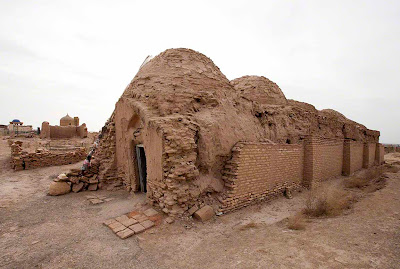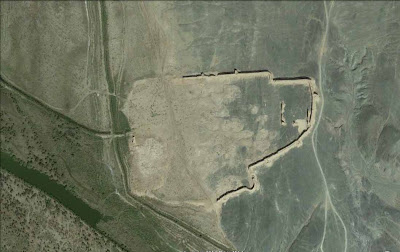Uzbekistan | Khwarezm | Mizdakhan | City of the Dead

From Janpiq Qala we proceeded forty-eight miles as the crow flies downstream to the no-account city of Nukus , which I had visited before and certainly did not want to visit again. Hurrying through Nukus we crossed the Amu Darya River and drove about twenty-five miles southwest to the immense burial grounds of Mizdakhan. Apparently there was a settlement on this site as far back as the fourth century b.c. when Khwarezm was freeing itself from the Persian Achaemenid Empire. This original settlement was destroyed by fire around the end of the second century b.c. Another settlement existed here between the first and fourth centuries a.d. but it too was eventually destroyed by agents unclear. Around the second century b.c. a cemetery was established here and after the settlements disappeared the area eventually became devoted to burials. Between the fifth and eight centuries it became an important Zoroastrian burial site with many ossuaries containing bones which had been had stripped of
